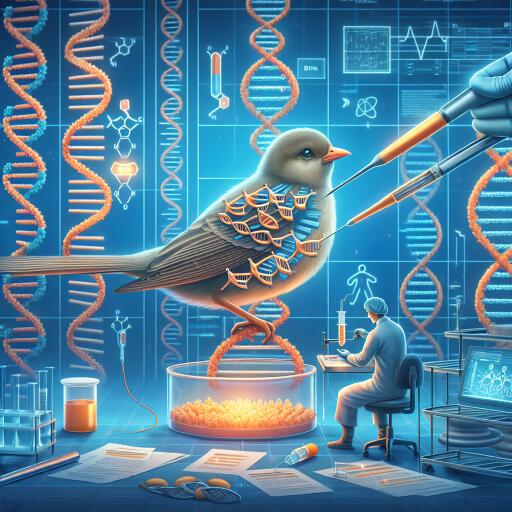Junk DNA in Birds Inspires New Technique in Inserting Codes Into Genomes, Unlocks Safe and Efficient Gene Therapy
With the groundbreaking approval of CRISPR-Cas9 therapy for the treatment of sickle cell disease, the potential of gene editing tools to cure hereditary diseases has been illuminated. Yet, the ability to insert whole genes into human genomes remains a significant hurdle, leaving the substitution of defective or deleterious genes a distant goal. This challenge is especially stark in the context of other genetic diseases where simply blocking or editing a gene via CRISPR technology falls short in rectifying genetic mutation consequences.
Addressing this gap, scientists have developed a novel method named Precise RNA-mediated Insertion of Transgenes (PRINT), providing a promising pathway to not only edit but also integrate new genes within DNA, potentially revolutionizing gene therapy.
PRINT operates by utilizing a technique akin to delivering CRISPR-Cas9 into cells for genome editing. It harnesses some retrotransposons’ capability to embed entire genes into genomes efficiently and without hindering other genomic functions, complementing CRISPR’s ability to deactivate genes, introduce point mutations, and insert small DNA segments.
Retrotransposons, or retroelements, are DNA pieces that, when transcribed to RNA, produce enzymes turning RNA back into DNA within the genome. This cycle predominantly serves to increase the genome’s bulk with retrotransposon DNA. Notably, about 40% of the human genome is composed of this so-called “selfish” DNA, though the majority of these genes are non-functioning or “junk” DNA.
In the PRINT method, a singular RNA piece encodes the R2 protein, a common retroelement protein with various active sections, including nickase and reverse transcriptase, while another RNA acts as the template for the DNA of the transgene to be integrated into gene expression control regions.
The challenge with many hereditary diseases is that they stem from multiple mutations within the same gene, leading to gene functionality loss. CRISPR-based gene editing therapies thus require personalization to an individual’s specific mutation. PRINT’s approach to gene supplementation bypasses this issue, delivering the correct gene to each affected individual, which then enables normal protein production irrespective of the mutation.
Given this vast potential, numerous academic labs and startups are now exploring transposons and retrotransposons for gene insertion in gene therapy. The LINE-1 retrotransposon, for example, has replicated across 30% of the human genome, including some “hitchhiker” genes.
At the University of California Berkeley, Professor Kathleen Collins and her team have been pioneers in developing the PRINT technique, marking a significant advance towards safer and more efficient gene therapy. Their research, detailed in the study “Harnessing eukaryotic retroelement proteins for transgene insertion into human safe-harbor loci,” points towards a promising future.
Collins highlights the challenges in engineering the LINE-1 retrotransposon protein for safe, efficient human genome insertion. Instead, her team’s research indicates that inserting genes into the genome’s repetitive, ribosomal RNA encoding region could offer a more viable strategy.
In search of efficient gene insertion methods, Collins’ team explored retroelements across various animal genomes, including insects, horseshoe crabs, and other multicellular eukaryotes. Their findings revealed that birds, such as zebra finches and white-throated sparrows, harbored the most promising candidates for this purpose. Subsequent experiments confirmed that R2 derived from birds effectively facilitated message delivery and new gene integration into human cells, showcasing normal functionality post-integration.
This innovative application of “junk” DNA not only broadens our understanding of genetic biology but also paves the way for breakthroughs in gene therapy, offering hope for treating a range of hereditary diseases safely and efficiently.










